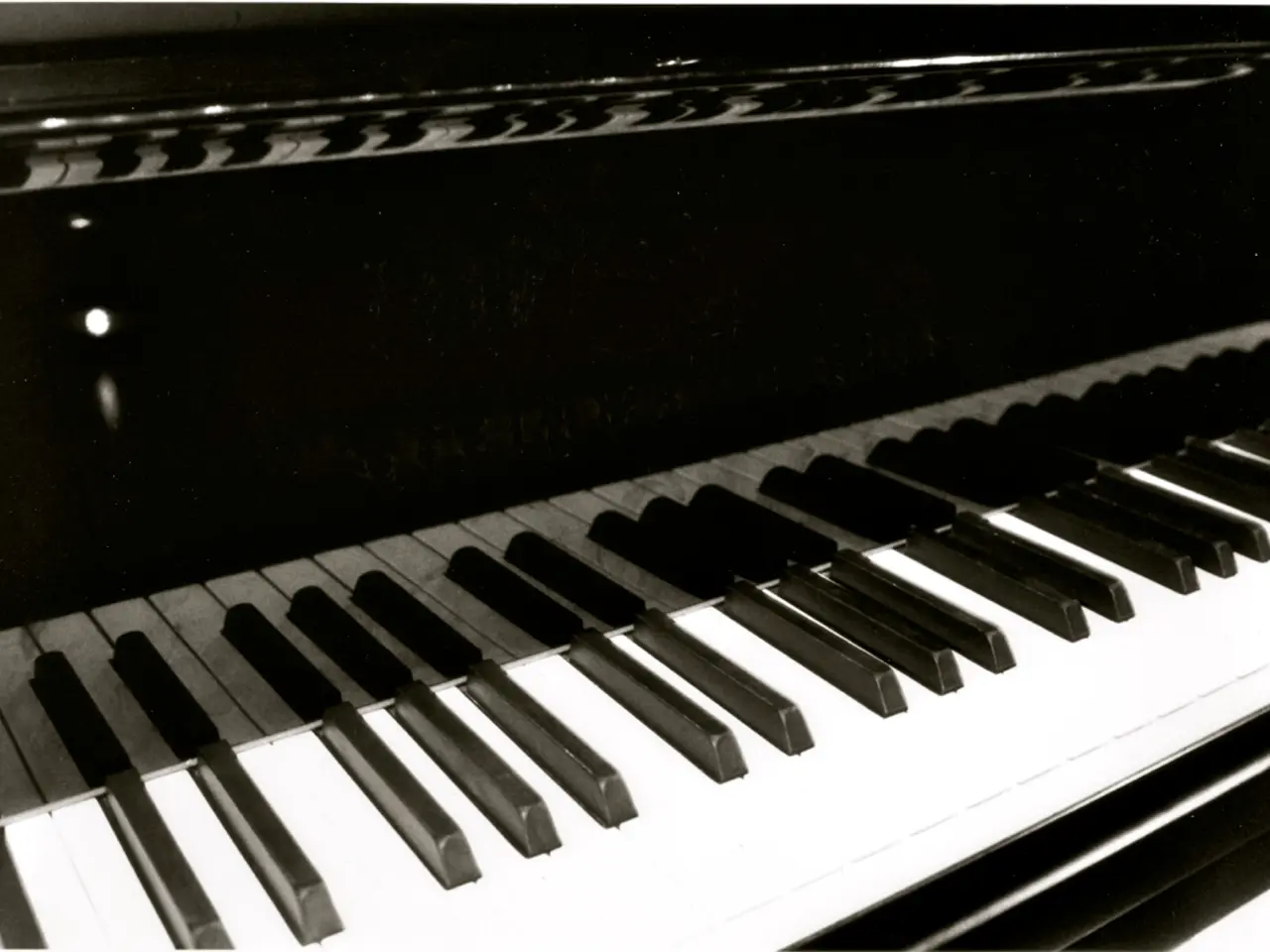Guide for Selecting the Perfect Piano: Grand, Upright, or Digital Edition
In the world of pianos, three main types—grand, upright, and digital—offer distinct advantages and disadvantages that make them suitable for different needs. These factors include budget, space, and musical goals.
### Grand Pianos
Known for their superior sound quality, grand pianos boast a rich, resonant tone and excellent dynamic range due to their horizontal hammer action and large soundboard. This makes them a favourite among advanced and professional pianists. Grand pianos are also aesthetically impressive, often serving as a centrepiece in homes or concert halls. However, they come with a hefty price tag, typically costing thousands to tens of thousands of dollars, with premium models like the Yamaha AvantGrand N3X digital hybrid grand exceeding $19,000. Additionally, their large footprint requires significant space and careful room acoustics. Regular tuning and maintenance are also necessary, adding ongoing costs.
### Upright Pianos
More compact and affordable than grands, upright pianos are better suited for smaller spaces like apartments or homes. They offer decent acoustic piano touch and sound, making them suitable for beginners and intermediate players. Upright pianos still require tuning and humidity control, though typically less costly than grands. Despite this, they offer less sound projection and nuance compared to grand pianos due to their vertical hammer action.
### Digital Pianos
Digital pianos are highly space-efficient and portable, making them ideal for apartments, dorms, and small rooms. They offer lower initial and long-term costs, with models ranging from under $500 to several thousand dollars. Features like volume control, headphone use for silent practice, and multiple instrument sounds are standard. High-end digital grands or hybrid models like the Yamaha AvantGrand N3X can replicate grand piano key action, offering benefits like no tuning needed and modern connectivity. Technology features such as “Virtual Technician” (e.g., Kawai ES920) allow for sound customization to personal taste. However, while improving, the sound and touch generally don't fully replicate the authentic acoustic piano experience, especially in cheaper models. Some models may also have limited connectivity or basic recording features.
---
### How to Choose Based on Your Needs
| Factor | Grand Piano | Upright Piano | Digital Piano | |----------------|------------------------------------|----------------------------------|---------------------------------------------| | Budget | High ($5,000+; premium $10,000+) | Moderate (often $3,000-$7,000) | Low to High ($500 to $20,000+) | | Space | Large; requires a dedicated room | Smaller footprint; fits in medium rooms | Very compact; ideal for small spaces | | Sound Quality | Best tonal richness and responsiveness | Good sound but less nuanced | Varies widely; high-end digital grands/pianos can approach acoustic quality | | Maintenance | Regular tuning and upkeep required | Some tuning required | No tuning; minimal maintenance | | Practice Needs | Ideal for advanced players and performance | Good for learners and casual play | Great for beginners to advanced with features like headphone practice and volume control | | Features | Acoustic only | Acoustic only | Extra features like effects, recording, connectivity, customization (e.g., Virtual Technician) |
---
### Recommendations
- If you have space and budget and want the richest, most authentic touch and sound for serious playing or performance, a grand piano is ideal. - If space or budget is limited but you want real acoustic piano feel, an upright piano is a practical compromise. - If you want flexibility, lower cost, silent practice, modern tech features, or limited space, a digital piano—especially a high-quality model—is the best choice.
For example, beginners or those in small spaces may choose digital models like the Korg C1 Air (~$1500) or Kawai ES920 which includes advanced sound customization. Intermediate players in moderate space might find an upright piano a practical acoustic solution. Advanced pianists with space and budget might consider a hybrid digital grand like the Yamaha AvantGrand N3X for a combination of acoustic feel with digital convenience.
In summary, weigh factors of budget, space availability, desired sound quality, and convenience features alongside your musical ambitions to select the piano type that best fits your lifestyle and goals. Keep in mind that digital pianos depreciate faster and technology ages quickly, after 10-15 years, parts may become obsolete or difficult to replace. Digital pianos use recorded samples or physical modelling to replicate the sound of an acoustic piano, often combined with weighted keys to simulate the touch. Grand pianos require significant floor space, not just for the instrument itself but for the player and audience. Upright pianos still offer the feel and resonance of an acoustic instrument, though with some compromises compared to grands.
- For individuals seeking a lifestyle focused on fashion and beauty, digital pianos offer various features like customization with tech tools such as the Kawai ES920's Virtual Technician, making it ideal for experimenting with different looks and styles.
- Food and drink connoisseurs might find affinity in a grand piano, with its luxurious sound quality often accompanied by an impressive aesthetic that could become a centerpiece in their home or dining area.
- Pets and travel enthusiasts looking for a portable option could appreciate the space-efficient nature and affordability of digital pianos, enabling them to bring music along during their adventures or move effortlessly between homes.
- Home and garden enthusiasts may find appeal in the aesthetic value of a grand piano, as well as the need for proper room acoustics and care for the instrument, which could contribute to an overall harmonious living environment. Lastly, those prioritizing relationships might consider an upright piano, as it caters to both beginners and intermediate players, making it feasible for couples or families to enjoy music-making together.




